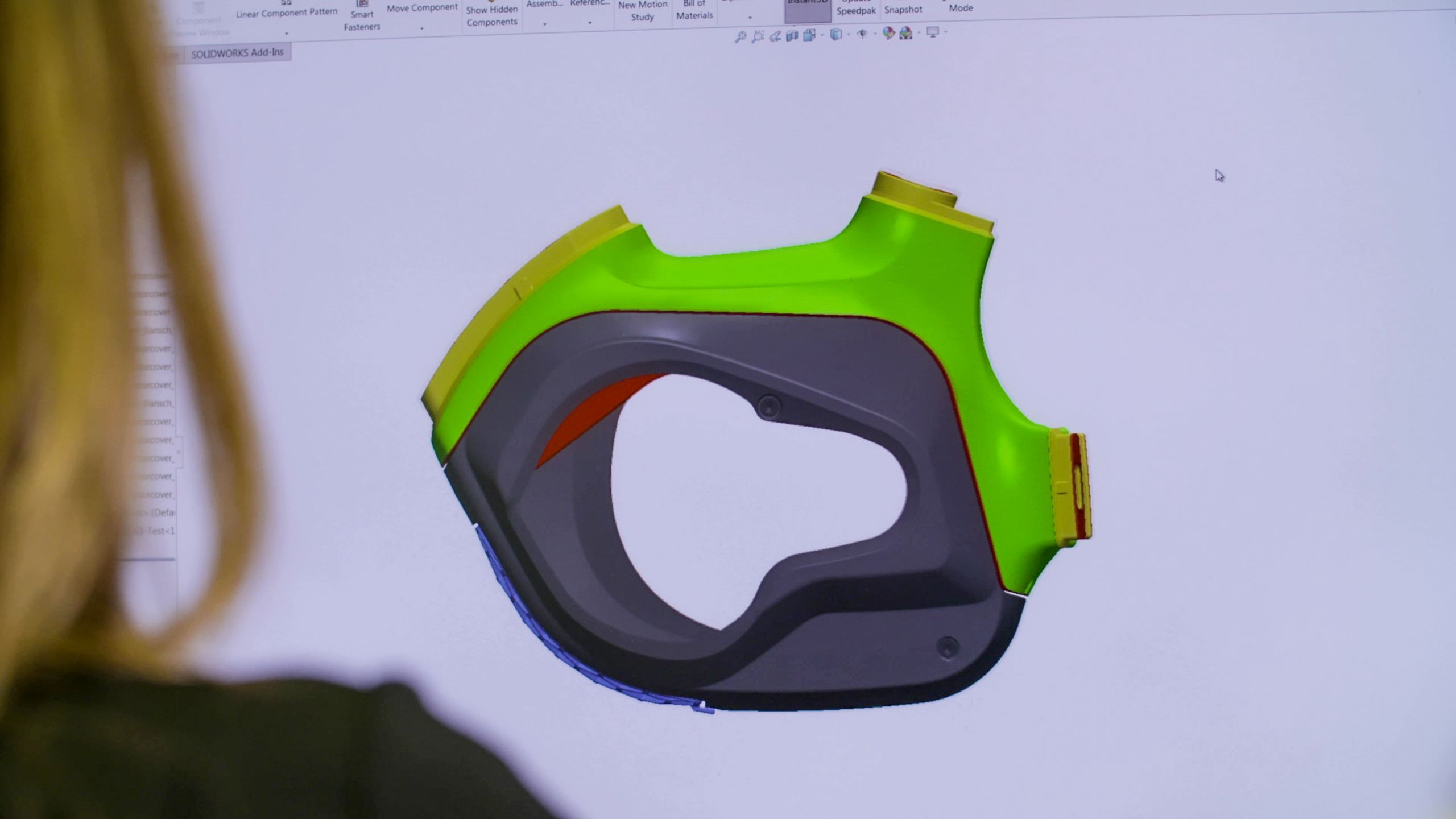
Engineering
Engineering, together with product design, forms the basis for a manufacturable and future-proof plastic product. At Timmerije, we strike the perfect balance between technical expertise and customer-focused collaboration to develop designs that meet the customer’s requirements. Through co-engineering, supported by the latest 3D-CAD applications and moldflow simulations, Timmerije ensures that every design is efficient to produce, easy to assemble and future-proof.
What is engineering?
Engineering is the process of using technical expertise to turn ideas into functional and producible plastic products. It goes beyond design alone: engineering looks at the best materials, the most suitable production methods and the practical feasibility of a design. Factors such as strength, ease of use and cost efficiency also play an important role in this process.
In practice, plastics engineering ensures that a concept is technically feasible, performs reliably and is suitable for series production. It forms the connecting link between creative product design and the actual production process. This results in products that not only look good, but can also be produced in a responsible manner.
Impact of engineering
Engineering is an essential part of the development of plastic products. It determines whether a design is technically feasible, functional and can be produced reliably. For Timmerije, this means that we can take care of everything for our customers and successfully bring complex products to market. Engineering is therefore not only a technical process, but also a strategic tool that contributes to efficiency, quality and innovation. Below, we highlight the most important aspects in which engineering makes a difference:
- Technical feasibility and quality
Engineering ensures that a product idea is practically feasible and performs reliably. Each design is carefully tested for strength, dimensions, functionality, wear and tear, and safety. This guarantees that the end product not only meets user expectations, but is also durable and consistently high quality. This approach prevents problems at a later stage of the process, allowing the product to be manufactured according to plan. - Efficiency, cost savings and innovation
By considering material selection, production processes and assembly from the outset, significant time and cost savings can be achieved. At the same time, engineers continuously analyse processes and designs to implement improvements. This leads to innovative solutions, such as lighter, stronger or more sustainable products. It also ensures that production methods become faster and more efficient. - Connection between design and production
Engineering forms the essential bridge between creative product design and actual production. This means that designs can be manufactured immediately and that technical challenges are resolved at an early stage. It prevents delays and ensures that complex products can be manufactured without any surprises. - Sustainability and customer care
Through smart material selection, process optimisation and waste minimisation, engineering contributes to sustainable plastic products. For Timmerije, this also means that customers are completely taken care of. Engineers are involved throughout the entire process, from concept and feasibility study to mould development, injection moulding and assembly. This allows customers to focus fully on their core activities, while complex products are successfully manufactured.
How are our engineers supported?
Our engineers are supported by advanced digital design and simulation tools, which enable them to streamline the entire development process for plastic products. These tools make it possible to visualise designs, identify potential bottlenecks at an early stage and better coordinate production processes. This support makes the process from concept to series production many times more efficient. The result is a higher quality product with better functionality and reliable performance.
Use of 3D-CAD applications
Applications such as SolidWorks and Pro-Engineering play an important role in the design of plastic products. By using this software, engineers can digitally construct complex parts and assemblies and test them virtually before a product is manufactured. This makes it possible to make better-informed decisions, implement changes more quickly and improve collaboration between design and production departments. Using 3D CAD allows products to be developed more efficiently with high accuracy and better control of functionality and quality.
Performing moldflow simulations
Moldflow simulations are used to analyse and optimise the injection moulding process for plastic products. These simulations enable engineers to predict how the material will behave in the mould. This allows potential problems, such as filling or deformation issues, to be identified at an early stage. By using Moldflow simulations, designs can be adjusted before physical moulds are made. This saves time, material and costs. Moreover, this digital approach contributes to higher product quality, better accuracy and reliable performance of the end product.
Why focus on co-engineering?
Co-engineering revolves around collaboration between the customer and engineer from the initial design phase onwards. By combining knowledge and experience directly, a design is created that is not only creative and functional, but also technically feasible and efficient to produce. This prevents costly adjustments at a later stage and shortens the lead time from idea to end product. For Timmerije, co-engineering means supporting customers with expertise in material selection, mould development and production techniques. This creates an optimal balance between design, performance and production, enabling innovative plastic products to reach the market faster.